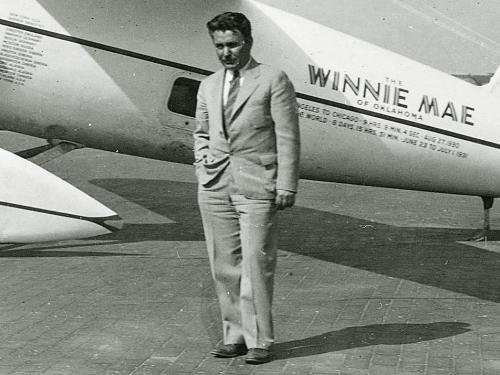

Stories of daring, stories of technological feats, stories of prevailing against the odds ... these are the stories we tell at the National Air and Space Museum. Dive in to the stories below to discover, learn, and be inspired.
Showing 21 - 26 of 26

October 05, 2012
“Are you sure you want to donate this?” I asked the intern. “This” was a slightly-used Smartphone, in perfect working condition. The intern, Rebecca Bacheller, was, indeed, willing to donate it. She heard that the Time and Navigation team wanted to disassemble one and showcase the current state of geolocation devices, enabled by the Global Positioning System and other advanced electronics. Our plan was to label the phone’s circuits, and show how they correspond to classical methods of navigation that had been practiced for centuries. Becky was excited that she would be credited in the label; she also had another motive: namely a reason to trade up to the newest version of the popular phone.

August 17, 2012
It takes a lot of people and effort to bring an exhibition from idea to reality.

March 14, 2012
I work behind the scenes as part of a team of museum specialists supporting the upcoming exhibit Time and Navigation: The Untold Story of Getting from Here to There opening in March, 2013. I am the person who shepherds the objects themselves through the process.

August 02, 2011
A reflects on the end of one exhibit, the beginning of the next.

July 22, 2010
July 22, 2010, marks the 77th anniversary of Wiley Post’s 1933 solo flight around the world in the Lockheed 5C Vega Winnie Mae. This record-breaking flight demonstrated several significant aviation technologies. It used two relatively new aeronautical devices—an autopilot and a radio direction finder.

January 11, 2010
I was perusing that perennial bestseller, the FAA’s “Aeronautical Information Manual,” the other night, and ran across an intriguing reference to code beacons and course lights. Code beacons, in general, flash identifying information in Morse code; coded course lights are used with rotating beacons of the Federal Airway System, are highly directional, and are paired back-to-back pointed along the airway. What interested me was the appended note: